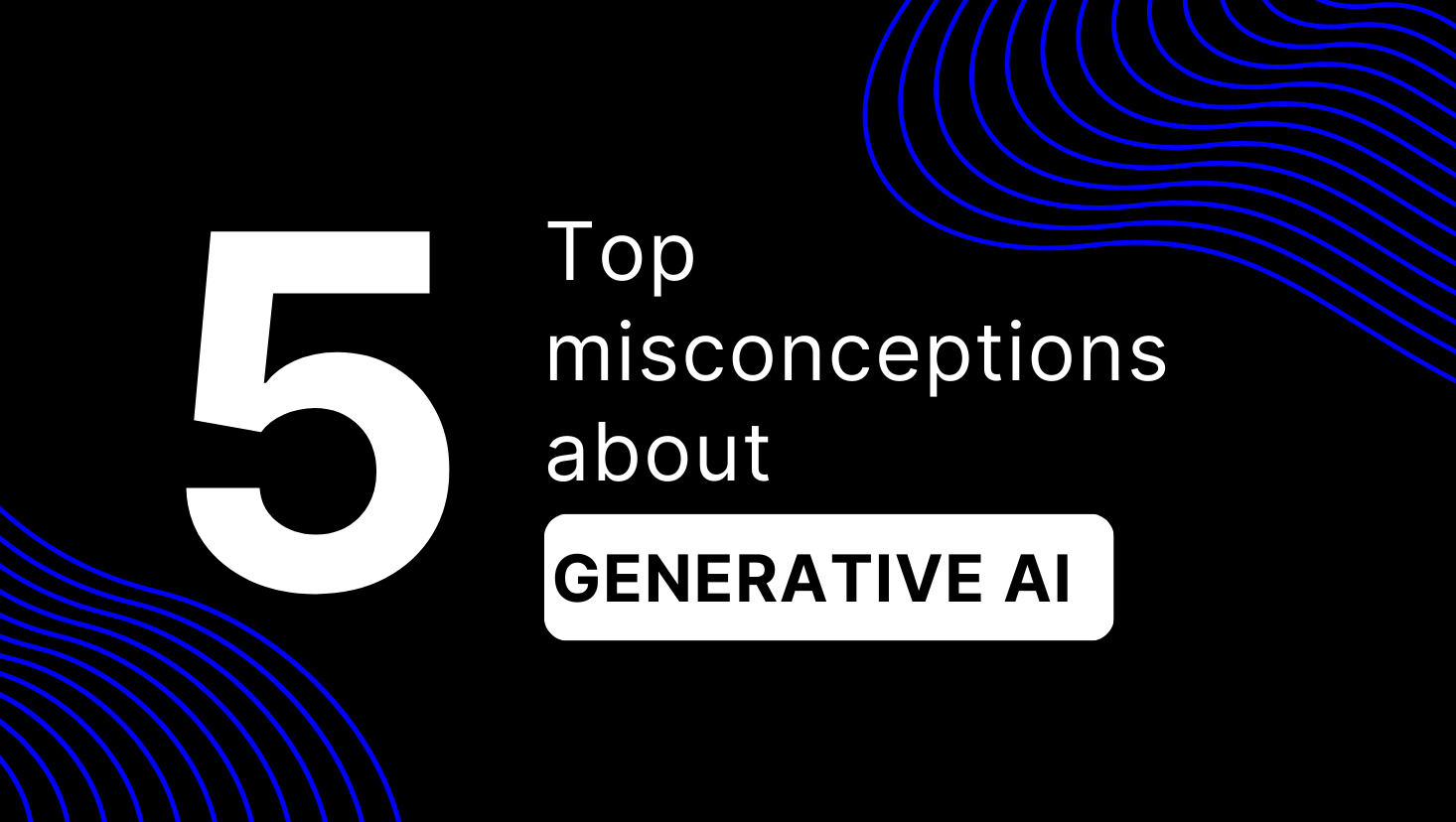
- Oct 5, 2023
- 5 minutes
-
 Andreas Blum
Andreas Blum
In today’s fast-paced digital landscape, companies are faced with an ever-increasing need to leverage data and artificial intelligence (AI) to stay competitive. The potential for growth, efficiency, and innovation that data and AI offer is immense, but it requires a strategic approach and a commitment to building a data-driven culture. In this article, we will explore four key strategies for companies looking to harness the power of data and AI.
Since the debut of ChatGPT in late 2022, the world has witnessed a surge in interest and exploration of Generative AI. This has led however to few scenarios where the application of Generative AI has directly translated into measurable financial gains.
Consider the CIO who, armed with a ChatGPT subscription paid by her employer, shares tech article summaries on LinkedIn. While this might boost the individual’s visibility, the impact on the company’s performance remains uncertain. Likewise, a Swiss medtech company’s adoption of an internal ChatGPT instance for crafting sales emails has not manifested as increased revenue or a reduced sales team size. Similarly, an insurance company’s chatbot implementation has not reduced customer service headcount or substantially decreased client calls.
These examples underscore the importance of substantiating AI investments with tangible financial outcomes, especially in times of economic uncertainty. This leads us to the pivotal question: How can businesses cut through the hype of Generative AI and produce measurable impact on their financial bottom line? A profitability increase will be achieved through either a growth in revenue or a cost reduction. But where to focus and how to effectively measure the impact of Genereative AI use cases impact on financial performance?
In this article, we outline an approach towards achieving measurable financial impact with Generative AI, emphasising both practicality and results.
Identify high-impact areas and relevant KPIs
The first step is to pinpoint where Generative AI can create the most financial impact within your value chain. The area of application will differ by industry, whether it’s R&D, marketing, or customer service. Moreover, developing an understanding of your key performance metrics in the area under consideration is crucial. For example, if you operate in the financial services sector, imagine a retail bank, a useful KPI might be the number of client requests resolved per customer service rep per hour.
Shortlist suitable use cases
Once you have a gauge on your KPIs, consider which Generative AI use cases could improve these metrics. It might be customer-facing chatbots for quick query resolution or internal AI assistants for quicker data and information retrieval. We recommend three criteria for prioritising the use cases:
- Financial impact: Evaluate the financial gains expected from the use-case, being more conservative than optimistic.
- Investment need: Include both upfront development and maintenance costs in your calculation.
- Time-to-impact: Favour solutions that provide quick wins to build organisational momentum.
Role of monitoring and feedback
After the use case has been developed and deployed into a productive solution, monitoring not just from a technical but also from a financial perspective is critical. This includes keeping an eye on costs, but also whether the envisaged financial efficiency improvements have materialised. An honest assessment is critical to determine whether the use case turns out to be an expensive gimmick or is a genuine productivity booster.
Translating productivity to profit
There are two scenarios in which generative AI can contribute to your bottom line and it is important to pick which one to focus on:
- Enhanced workforce productivity: You want to deploy Generative AI to do “more” with the same workforce. Imagine insurance agents cross-selling more products per shift, aided by intelligent message drafts. Here, a before-and-after comparison of KPIs like emails-per-hour and closed contracts is essential.
- Reduced time requirement: You want to deploy Generative AI to get the same amount of work done but with less people. Take the HR department as an example. A well-tuned ChatGPT could cut manual request handling by 50%. However, to realize this as a financial gain, a reduction in headcount becomes inevitable, often requiring challenging decisions on redundancies.
While Generative AI can serve different purposes, e.g. help you become more creative, the focus here is on improving financial performance. The following four recommendations will increase your chances of success:
- Be clear about the envisaged workforce impact: Know whether you’re aiming to achieve more output with an existing workforce or doing the same work with fewer people. This clarity will guide your metrics and internal communication strategy.
- Define KPIs: Based on the objectives, define clear KPIs, abiding by Peter F. Drucker’s wisdom: “What gets measured gets managed.” The most effective KPIs follow the proven SMART formula. They are Specific, Measurable, Attainable, Realistic and Time-Bound.
- Develop a solid business case: Create a financial business case based on your most reasonable assumptions and consider project cost overruns and the time lag for financial benefits to manifest in your profit & loss statement.
- Ensure you have the required expertise: If internal expertise or resources are lacking, don’t hesitate to consult a trusted advisor well-versed in both technology and business aspects. In our Generative AI Practice at Unit8 we have already assisted Swiss and EU-based organisations across different industries to quickly deploy use cases and maximise Return On Invest.
Conclusion
In this article we have outlined some key considerations for achieving financial impact with Generative AI. We believe that clarity of objectives, combined with the outlined KPI focus will enable your organisation to move beyond the hype cycle and reap financial benefits from your Generative AI investments.


